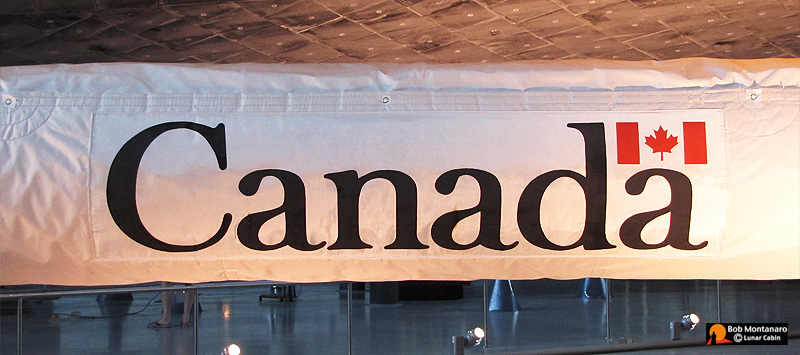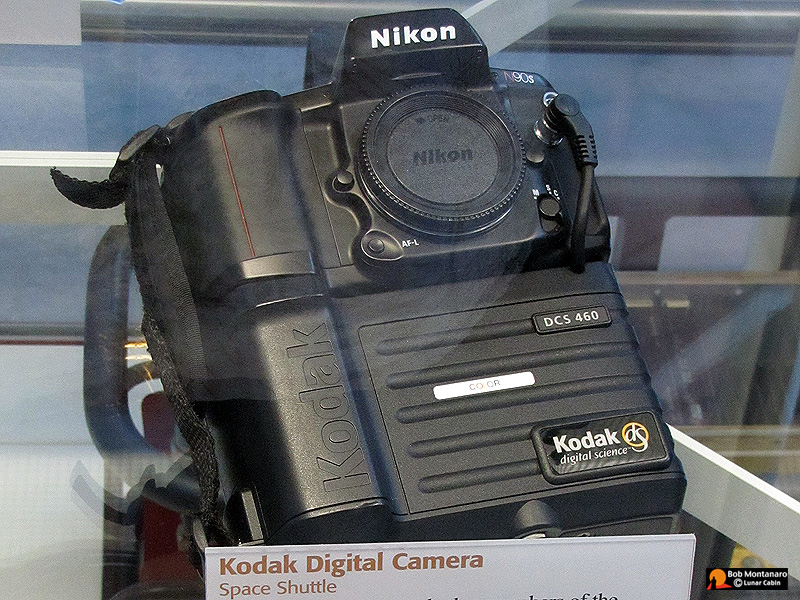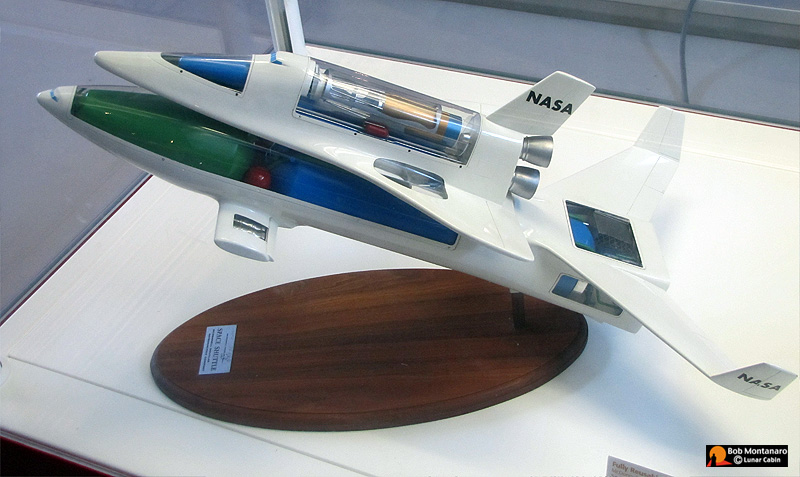 |
|
Space Shuttle Artifacts on display at the Smithsonian's National Air & Space Museum National Mall Building & Udvar-Hazy Center 13, 14 & 16 July 2012 Page Two of Two |
|
 |
|
The 50-foot long Canadarm Remote Manipulator System on display next to the Space Shuttle Discovery. From the display's interpretive panel: The Canadarm is a jointed robotic arm used to move payloads and position astronauts working outside the Space Shuttle or International Space Station. Remotely operated by an astronaut at a control station inside the spacecraft, the arm has shoulder, elbow, and wrist joints plus an end effector that serves as a hand. Television cameras mounted on the arm assist the operator in precisely controlling its movements. Although it can lift large masses in space, the arm cannot support its own weight on Earth. This Canadarm flew on 15 missions and four orbiters from 1994 through 2011, including Discovery's last six missions, all to the International Space Station. The Canadian Space Agency supplied robotic arms for the shuttle and space station programs. |
|
 |
|
| The End Effector used as the arm's "hand" is at right at the end of the arm. | |
 |
|
 |
|
| A close-up of the End Effector. A television camera is mounted at top to assist the operator. Note Discovery's Thermal Protection System tiles that illustrate the Shuttle's "flying brickyard" nickname. | |
 |
|
| A detail of the Elbow Actuator located approximately in the middle of the arm. | |
 |
|
| The Manned Maneuvering Unit (MMU) was a self-contained astronaut backpack propulsion device designed to permit astronauts to maneuver untethered outside the Space Shuttle. | |
 |
|
| JULIE Getaway Special - From the interpretive card: JULIE Getaway Special, Space Shuttle, STS 61-C - This experiment flew in the Shuttle payload bay as an untended "Getaway Special" in 1986. The Joint Utilization of Laser Intergrated Experiments (JULIE) studied the effects of laser light and cosmic radiation on various medical materials and human tissues. The apparatus included a small laser, a blood-typing machine, and syringes of blood samples and medications. Gift of St. Mary's Hospital, Milwaukee, Wis. | |
 |
|
| From the interpretive card: Payload and General Support Computer - Shuttle astronauts used this modified version of a commercial laptop computer for a variety of tasks. NASA selected a computer made by Grid Systems, Inc., because of its metal case and rugged construction. The systems integration firm SAIC modified it for use in space. This laptop flew on Shuttle mission STS-56 in 1993. | |
 |
|
| From the interpretive card: Kodak Digital Camera - In 1998, John Glenn and other members of the STS-95 Shuttle crew used this Kodak Professional DCS 35 mm camera, the highest resolution single-lens reflex digital camera sold at the time. The Nikon N90s camera body accepts standard lenses and accessories. | |
 |
|
| A model for a completely reusable Space Shuttle design by McDonnell Douglas Astronautics Company. | |
All contents copyright Lunar Cabin |
|